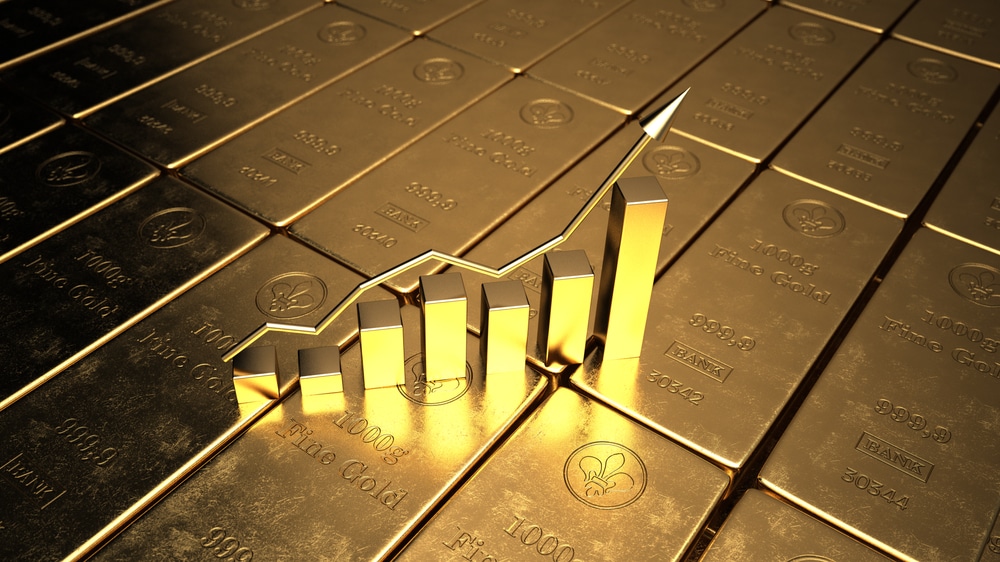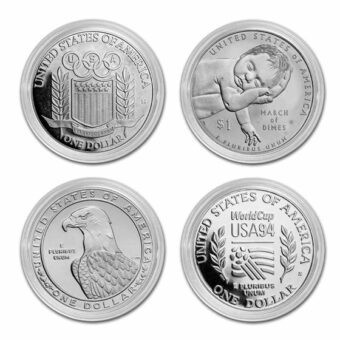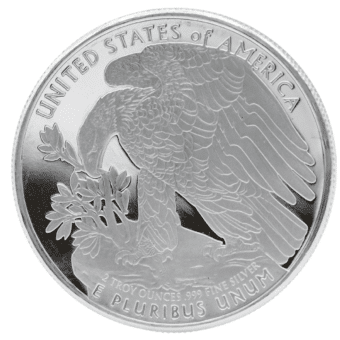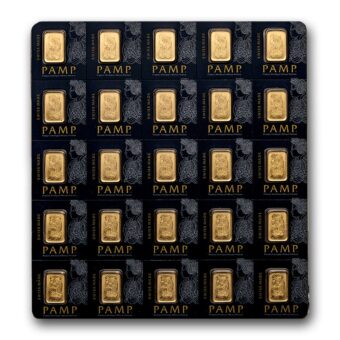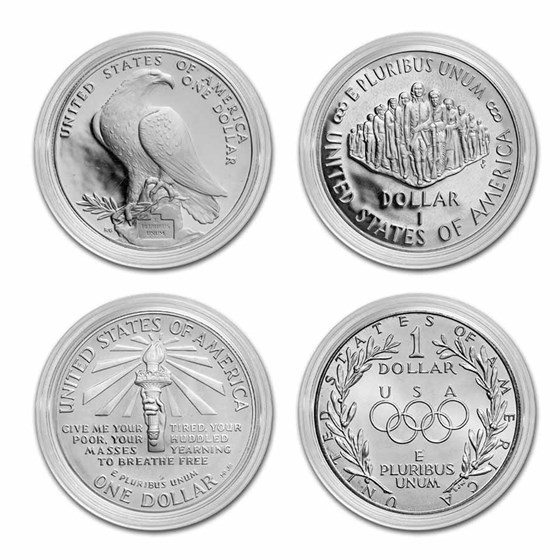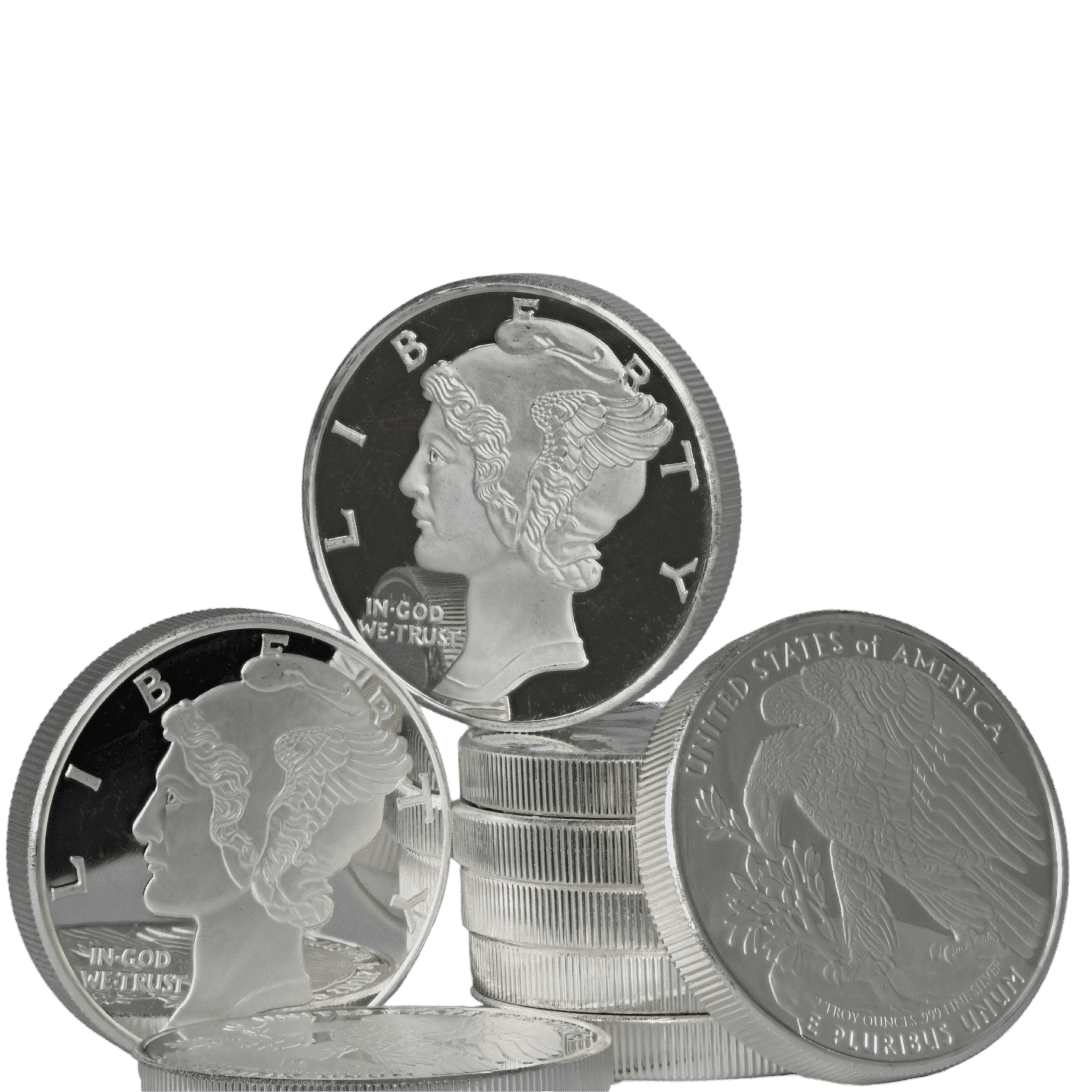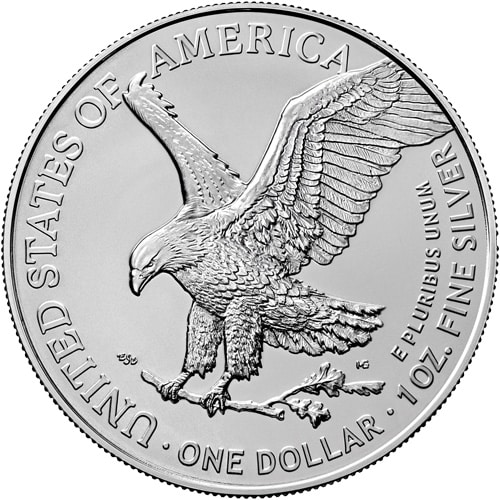Weekly Market Recap: Precious Metals Volatility Amid Inflation and Trade Tensions
Gold experienced another dynamic trading week, reaching an all-time high on Monday before retreating in the face of profit-taking and technical corrections. While short-term price fluctuations created uncertainty, the broader economic backdrop continues to favor gold as a hedge against inflation and monetary policy shifts.
Monday, 2/24: Gold prices surged to $2,960.10 per ounce, setting another record high before experiencing modest pullbacks. The rally was driven by safe-haven demand, central bank buying, and geopolitical concerns surrounding Israel-Hamas tensions, ongoing Russia-Ukraine ceasefire discussions, and trade policy uncertainty in the U.S.
Tuesday, 2/25: A sharp downturn saw gold and silver prices decline as traders engaged in profit-taking and long liquidation. While expectations of trade restrictions and tariffs on China, Mexico, and Canada created broader economic uncertainty, gold did not benefit as some had anticipated. Instead, the market showed signs of short-term exhaustion, with silver posting a more significant technical breakdown.
Wednesday, 2/26: Gold prices rebounded slightly, rising to $2,930.20 per ounce, as buying interest returned following the previous day’s losses. The market stabilized despite a stronger U.S. dollar and lower crude oil prices. Wall Street turned its focus to upcoming inflation data from the Personal Consumption Expenditures (PCE) Index and Federal Reserve commentary, which could influence expectations for future monetary policy.
Thursday, 2/27: Short-term traders continued to take profits, pushing gold down to $2,902.30 per ounce, marking a two-week low. Silver also lost momentum, declining further as it struggled to find fresh catalysts. While fundamentals for gold remain strong, the market lacks an immediate driver to sustain its rally in the short term.
Friday, 2/28: The selloff accelerated, with gold dropping to $2,867.70 per ounce, its lowest level in three weeks. Silver followed suit, declining to a four-week low of $31.685 per ounce. The January PCE inflation report—which showed inflation rising 2.5% year-over-year—came in largely as expected. While markets reacted cautiously, analysts are divided on how this could influence the Federal Reserve’s rate path in the coming months.
Inflation, Interest Rates, and Gold’s Role in a Changing Economy
The latest economic data continues to reflect stubborn inflation, reinforcing the long-term case for gold as a store of value and a hedge against economic uncertainty. While the Federal Reserve has made significant efforts to bring inflation down to its 2% target, price pressures persist, complicating future policy decisions. Investors are carefully watching for signs of whether the Fed will pause rate hikes or shift toward rate cuts, as both scenarios have important implications for gold prices.
Key Economic Data and What It Means for Gold
- Core PCE inflation, the Federal Reserve’s preferred gauge of inflation, rose 0.3% in January, up from 0.2% in December, signaling that price pressures remain elevated.
- 12-month core inflation came in at 2.6%, a modest decline from the previous reading but still above the Fed’s 2% target, suggesting inflation remains persistent.
- Consumer spending unexpectedly declined by 0.2%, missing expectations of a 0.2% increase. This drop could indicate that consumers are becoming more cautious amid rising living costs and economic uncertainty.
- Personal income rose by 0.9%, more than double the forecasted 0.4% increase, suggesting that households may be saving more in anticipation of potential economic headwinds.
- Gold futures fell 0.73% to $2,855.60 per ounce, reflecting short-term volatility as traders adjusted positions in response to economic data and Federal Reserve policy expectations.
The Takeaway: The Inflation-Gold Relationship Remains Strong
The latest inflation data paints a mixed picture of the U.S. economy. On one hand, core inflation remains above the Fed’s target, signaling that interest rates may need to stay higher for longer. On the other hand, slowing consumer spending and rising savings rates could indicate cooling economic growth, which may lead the Fed to shift its stance toward easing monetary policy later this year.
Historically, gold has performed well in periods of inflation and monetary policy uncertainty, particularly when real interest rates decline. If the Federal Reserve decides to pause or cut rates, the opportunity cost of holding gold decreases, making the metal more attractive to market participants. Meanwhile, if inflation remains stubbornly high, gold’s appeal as a hedge against currency devaluation and loss of purchasing power increases.
For long-term precious metals holders, the structural factors supporting gold remain firmly in place. Whether inflation cools or remains persistent, gold continues to offer a store of value in an unpredictable economic environment.
Central Bank Gold Accumulation and Global Currency Shifts
One of the most significant long-term trends in the gold market today is the aggressive accumulation of gold by central banks, particularly in emerging economies. This trend reflects a growing shift away from reliance on the U.S. dollar and traditional fiat currencies, reinforcing gold’s role as a global reserve asset.
Key Developments in Central Bank Gold Buying
- China’s gold reserves hit a record $73.5 billion, more than doubling in the last decade as the country seeks to reduce its reliance on the U.S. dollar.
- India has tripled its gold holdings, now valued at $70.9 billion, reflecting a broader diversification strategy amid rising global economic uncertainty.
- Global gold demand surged 24% year-over-year in 2024, reaching a record $382 billion, largely driven by central bank purchases.
- Trade policy shifts, including Trump’s reinstatement of 25% tariffs on Mexico and Canada, have added further uncertainty to global financial markets, prompting more countries to diversify their reserves into gold.
Why Central Banks Are Buying Gold at Record Levels
There are several key reasons why central banks are aggressively increasing their gold reserves:
- De-Dollarization and Diversification: Many countries are reducing their exposure to the U.S. dollar as geopolitical tensions and trade disputes create uncertainty about the dollar’s long-term stability. By increasing gold holdings, central banks can diversify their reserves and reduce dependence on any single currency.
- Inflation Hedge and Stability: With inflation remaining a challenge in both developed and emerging markets, gold serves as a hedge against currency devaluation and inflationary pressures. Unlike fiat currencies, which can be devalued by monetary policy decisions, gold maintains its intrinsic value over time.
- Global Economic Uncertainty: From geopolitical risks to financial system vulnerabilities, central banks recognize the importance of holding gold as a safe-haven asset. Countries like China and Russia, in particular, have increased gold purchases as a way to hedge against potential economic disruptions.
- Potential Shifts in Global Reserve Currencies: As the global financial system evolves, some countries are looking for alternatives to the U.S. dollar’s dominance. While gold is unlikely to fully replace the dollar, it plays a growing role as a neutral reserve asset that is not subject to the same political and economic risks as fiat currencies.
What This Means for Gold
The continued accumulation of gold by central banks is a bullish signal for the metal’s long-term price trajectory. As central banks increase their gold reserves, they effectively remove supply from the market, tightening availability and supporting higher prices.
For market participants, this trend highlights gold’s increasing role as a global financial anchor. Whether as a hedge against inflation, a safe-haven asset during market volatility, or a long-term store of value, gold remains an essential component of a well-diversified portfolio.
Silver’s Market Dynamics: Supply Deficit and Industrial Demand
While gold often dominates headlines, silver is experiencing its own set of supply-and-demand challenges, which could drive significant price movements in the coming years. Unlike gold, which is primarily used for investment and reserve purposes, silver has a dual role as both an investment asset and an industrial metal, making it uniquely positioned in today’s economy.
Key Silver Market Trends
- Silver is in its fifth consecutive year of a supply deficit, meaning global demand has outpaced new supply from mining and recycling.
- Industrial demand—particularly from the solar energy sector—continues to rise, creating additional pressure on supply chains.
- A liquidity shortage is emerging in London’s silver markets, with more physical metal moving toward the U.S., reducing available supply in international trading hubs.
Why Silver’s Supply Deficit Matters
- Booming Industrial Demand: Unlike gold, silver is a critical component in various industrial applications, particularly in solar panels, electric vehicles, and electronics. With the global push toward renewable energy, demand for silver in the solar industry is at an all-time high, driving consumption well beyond previous expectations.
- Limited New Supply: While silver mining operations continue, new supply has not kept pace with rising demand. Declining ore grades, stricter environmental regulations, and reduced capital investment in mining projects have contributed to a tight supply outlook.
- Physical Market Tightness: The silver market is experiencing a growing liquidity squeeze, with large amounts of metal moving from London—the world’s primary silver trading hub—to the U.S. This shift suggests that physical silver is becoming increasingly scarce in global markets, which could lead to significant price volatility in the coming months.
The Long-Term Investment Case for Silver
Despite short-term price fluctuations, the fundamental outlook for silver remains strong. With demand rising and supply constraints becoming more pronounced, the market may be setting up for a structural shift in pricing.
For investors, silver represents an attractive opportunity as both a monetary asset and an industrial commodity. Whether held in physical form or through silver-related investment vehicles, adding exposure to silver can provide portfolio diversification and potential upside in a tightening market.
Why Are Banks Airlifting Gold from London to New York?
Major banks, including JPMorgan Chase and HSBC, are transporting billions of dollars’ worth of gold bars from London to New York in response to a price disparity between the two markets. Gold prices in New York have been trading about $20 per troy ounce higher than in London, creating an arbitrage opportunity that financial institutions are now capitalizing on.
The shift is also being driven by broader economic uncertainty. With concerns over potential tariffs and inflationary pressures, demand for gold has surged, pushing futures prices up more than 10% in 2025 and over 44% from a year ago. While London remains the world’s key hub for physical gold transactions, New York plays a dominant role in futures trading. As a result, banks are physically moving gold to New York to meet market demand and support futures contracts.
This movement reflects a growing interest in gold as a store of value amid economic shifts. As investors and institutions react to changing financial conditions, the role of physical gold in global markets continues to evolve.
Upcoming Economic Events and Their Potential Impact on Precious Metals
Several key economic reports and Federal Reserve communications will be closely watched next week, as they could shape expectations for gold and silver prices.
Key Events for March 3–7:
Monday, March 3
- S&P U.S. Manufacturing PMI (Feb.)
- ISM Manufacturing Index (Feb.)
Tuesday, March 4
- New York Fed President Williams speaks
Wednesday, March 5
- ADP Employment Report (Feb.)
- ISM Services Index (Feb.)
Thursday, March 6
- Initial Jobless Claims (March 1)
Friday, March 7
- U.S. Jobs Report (Feb.)
Impact on gold and silver:
- Stronger-than-expected economic data could support the U.S. dollar, applying downward pressure on gold.
- Weaker job or inflation data could fuel concerns about economic growth, increasing demand for precious metals.
- Any indications of a Federal Reserve shift toward rate cuts could be a catalyst for higher gold and silver prices.
Final Thoughts: The Case for Precious Metals in a Shifting Market
As markets navigate persistent inflation, global trade uncertainty, and monetary policy shifts, gold and silver remain key components of a diversified portfolio. While short-term price movements will continue, the long-term structural factors—central bank demand, inflation resilience, and growing industrial applications for silver—suggest that precious metals will play an increasingly vital role in global financial markets.
For those seeking stability and diversification, physical gold and silver remain valuable assets in an evolving economic landscape.
To learn more about investing in gold and silver, visit BrightonGold.com or call 844-459-0042 to speak with one of our specialists.

